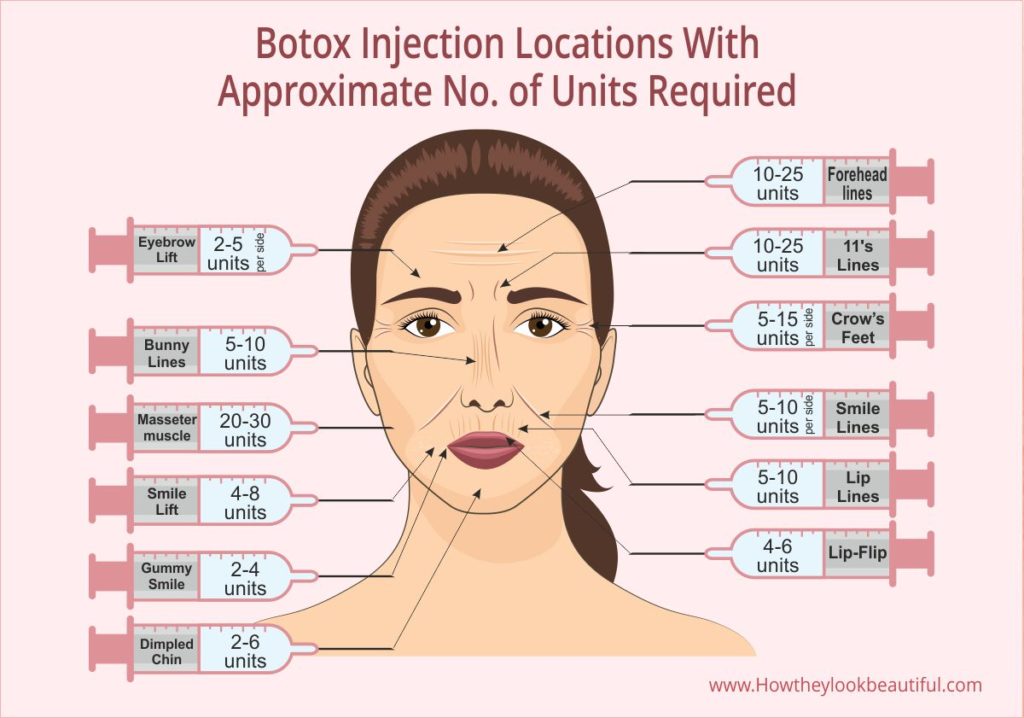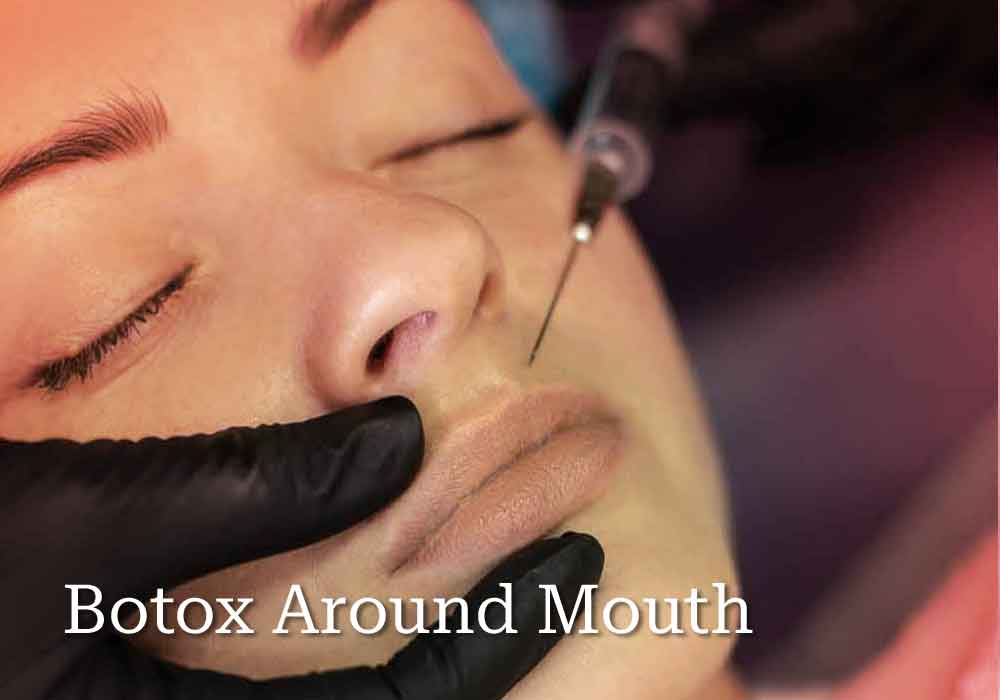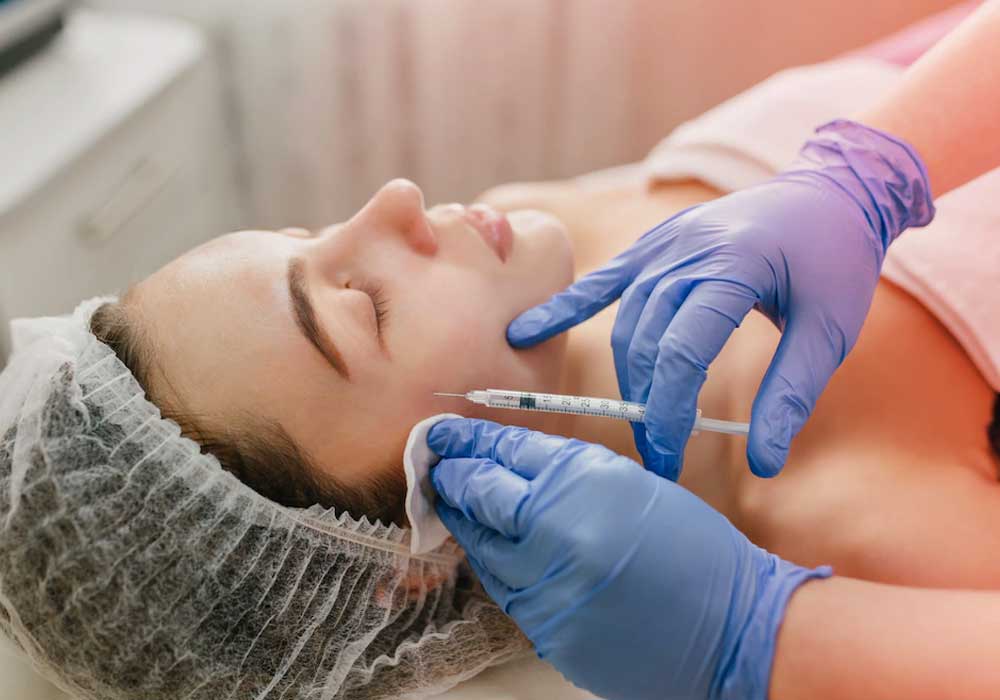There’s no need to be ashamed of getting botox – after all, even celebrities do it! But where on your face should you get a botox injection? Here’s a helpful guide with the approximate number of units injected per site with botox injection face map.
Injection Sites On Your Face You Can Get Botox® Done
Botox is most commonly used on the face, specifically the forehead, cheeks, around eyes, Between the Eyebrows, and around the mouth. It can also be used on the neck for Platysma Bands, under the chin for double chin and dimpled chin, under arms, and other parts of the body.
What is Botox®?
Botox is a popular cosmetic treatment that can temporarily reduce the appearance of wrinkles by weakening muscles. It is made from a neurotoxin called Botulinum toxin, which is produced by the bacterium Clostridium botulinum. Botox injections are commonly used to treat conditions such as blepharospasm (involuntary muscle contractions of the eyelids) and strabismus (misaligned eyes). The injectable form of Botulinum toxin is also approved for use in treating migraine headaches, excessive sweating, and urinary incontinence. Botox is more useful in treating areas where wrinkles result from muscle looseness rather than diminished volume where facial fillers may be used. It has been used safely in thousands of patients for over 25 years.
Botox Injection Sites on Face
1. Forehead
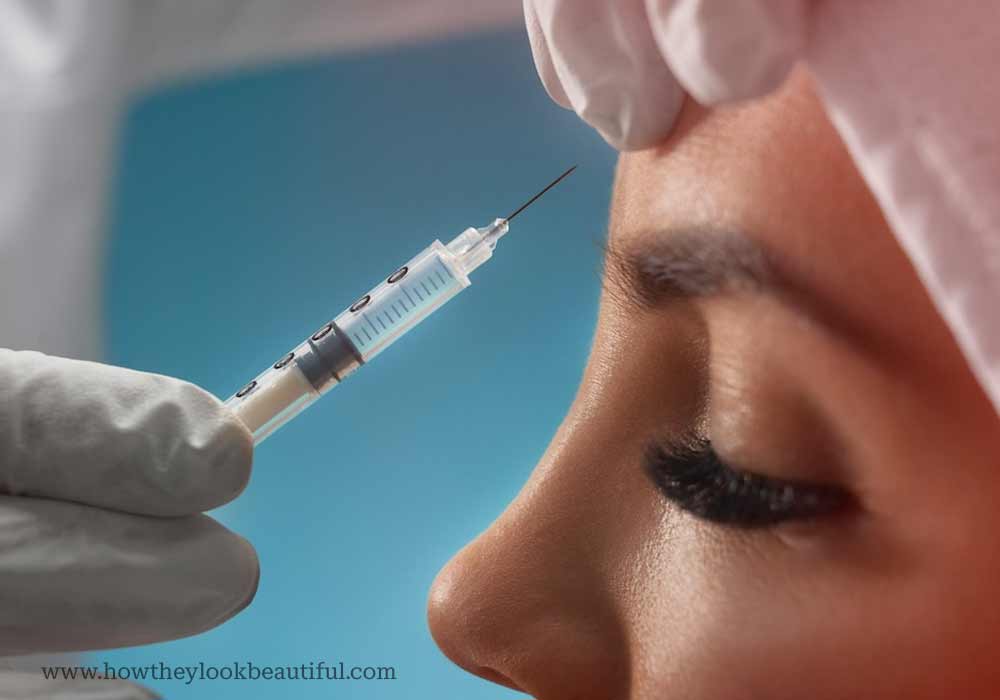
Botox can be injected into the forehead to smooth out wrinkles and lines. There are a variety of Botox injection sites on the forehead for aesthetic purposes. The most common injection sites on the face are: – Horizontal forehead lines (forehead furrows) -The glabellar region (between the eyebrows). Other potential injection sites include brow lift. It is a popular treatment for the brow area because it can give the brows a lift and create a more youthful appearance.
Forehead lines are caused by a combination of muscle movement and sun damage. Over time, the muscles in your forehead can cause the skin to crease and form lines. Sun damage also contributes to the formation of forehead lines by breaking down collagen and elastin, which are the proteins that give skin its firmness and elasticity.
Botox injections can help improve the appearance of forehead lines by relaxing the muscles that cause them. Injections are typically given every three to six months, and results can last for up to four months. After a few treatments, some people find that their forehead lines become less severe over time.
2. Botox for Frown Lines Between the Eyebrows
The medical term for this area on the face is “glabellar lines“, but most of us know them as “11s“ – as in, the 11 lines that can form between your eyebrows when you squint. Botox works by relaxing the muscles at this location that cause these wrinkles, giving you a chance to smooth them out.
3. Crow’s Feet
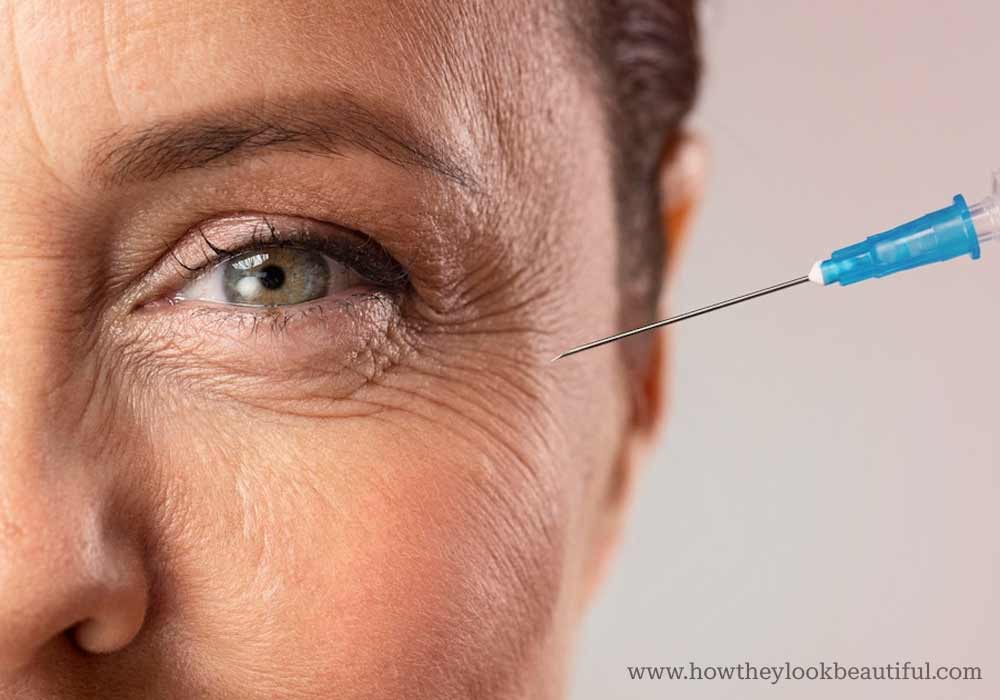
Crow’s feet are wrinkles that form on the outer corners of your eyes. They’re often one of the first signs of aging, and they can make you look tired or angry. Botox is a popular treatment for crow’s feet because it temporarily relaxes the muscles that cause these wrinkles. The procedure is quick and relatively painless, and it can give you noticeable results within a few days.
4. Upper Eyelids
Botox is also used in the treatment of eyelid drooping (ptosis) by injecting it into the upper eyelids to help lift them and make them look less droopy. It is also injected into the muscles of the eye to stop them from twitching. This treatment may need to be repeated every few months.
Botox also helps with thyroid eye disease. According to a study conducted on 24 patients, botox helps improve upper lid retraction (ULR) from congestive or fibrotic thyroid eye disease. The study found that a single 5-unit Botox injection improved ULR, reduced levator muscle function (LF), and produced an adequate lid contour in patients with congestive or fibrotic TED.
5. Around the Mouth
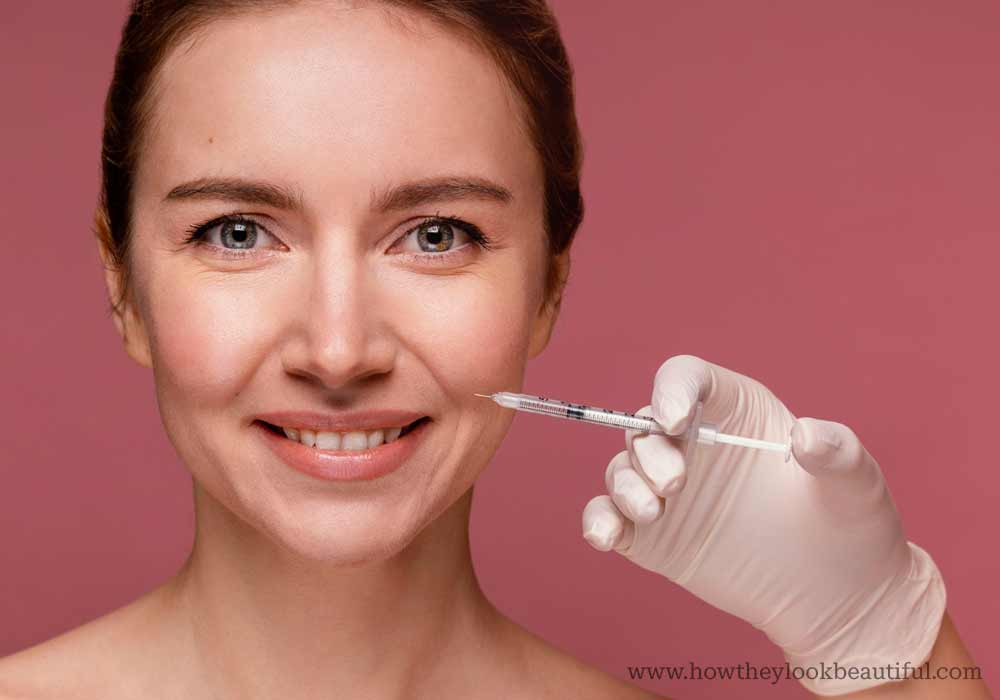
Botox can be used to treat wrinkles around the mouth, including the corners of the lips, marionette lines, and smoker’s lines. It can get rid of Gummy Smile. Gummy smiles are often caused by overactive muscles in the upper lip which pull the lip up too high while smiling. Other causes can be crooked teeth, a large overbite, or thinning lips. Botox can also treat the Downturned Mouth and Resting Bitch Face.
6. Philtrum Botox
The philtrum is the small area of skin between the nose and upper lip. It’s sometimes called the “Cupid’s bow.”
Botox injections in the philtrum can help appear reduced distance between the nose and lips and the upper lip flipped. The treatment can also help plump up thin lips. It is injected just above the vermilion border in about 2-3 areas.
Where to Inject Botox for Lip Flip?
Lip flip can be achieved by injecting botox into the orbicularis oris muscle which is the muscle that encircles the mouth and in vermillion border of the upper lip. The amount of botox injected will depend on the desired results. For a subtle lip flip, around 10 units of botox may be injected. For a more pronounced effect, up to 20 units can be injected.
7. Eyebrows
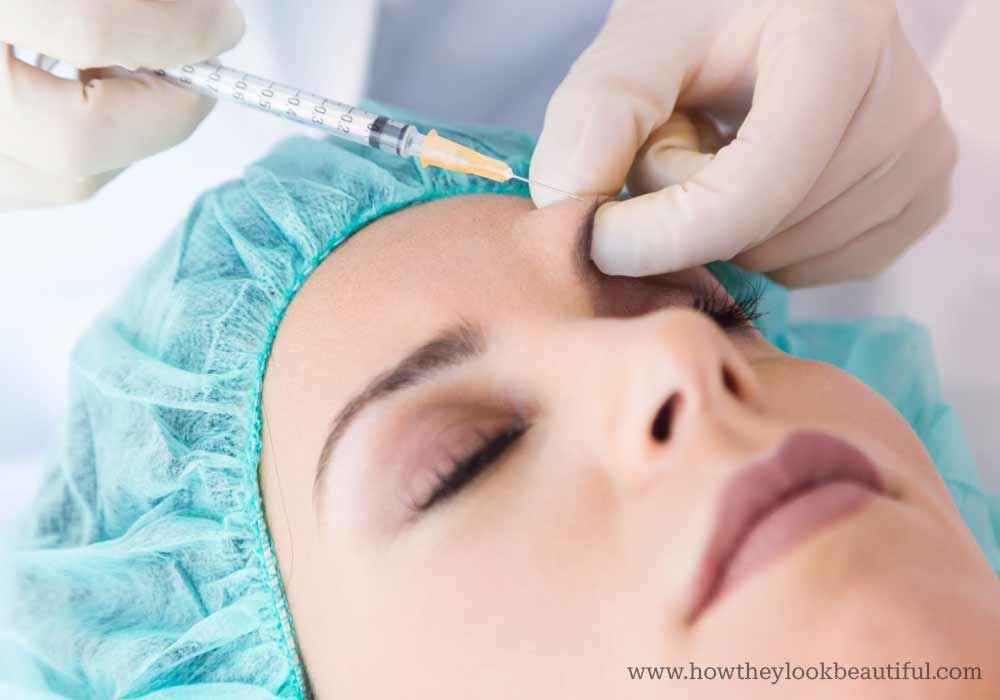
Botox can lift droopy brows and give you the arched look you desire. A small amount of botox is injected above the eyebrow, causing the muscles to relax and the brow to lift.
8. Jaw
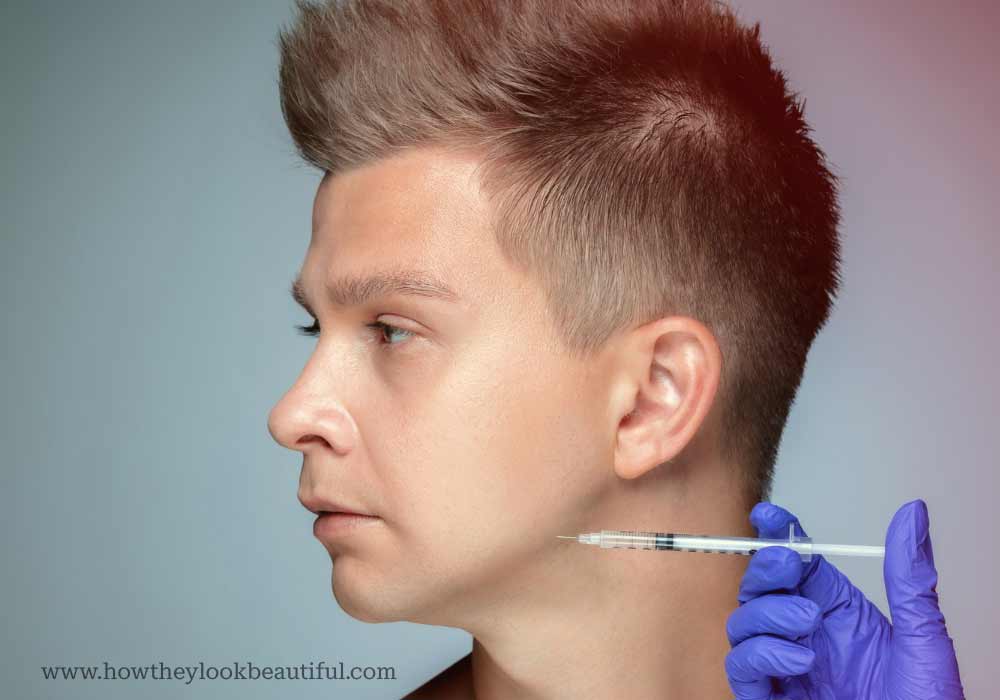
Botox can also get injected into the masseter muscle to reduce its size and relieve tension in the jaw. Botox relaxes the muscles that make up the sides of the jaw, resulting in a slimmer appearance. This can help to improve the appearance of a “square jaw” or provide relief from pain and tension in the jaw area.
9. Nose
Botox can be injected around the sides of your nose to help reduce or straighten out the appearance of Bunny Lines wrinkles. Bunny lines are the small lines that appear on either side of your nose when you smile and are caused by repetitive movements of the muscles in that area.
10. Chin
If you have a dimpled chin, botox may be the answer for you. A dimpled chin is caused by a muscle deformity, and botox can help to relax the muscles and improve the appearance of the chin.
11. Under the Chin

Botox can be injected into the chin to help improve the appearance of a double chin. It works by temporarily paralyzing the muscles in the chin, which makes the area appear smoother and more toned.
12. Neck
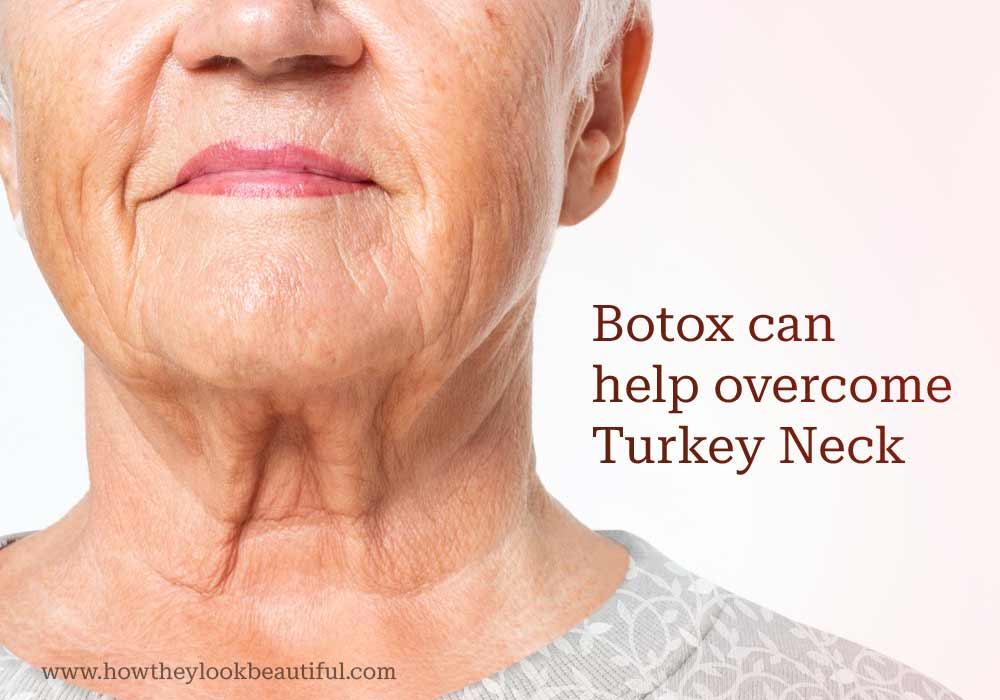
Apart from the locations on face, firmness and youthfulness in the neck area can be achieved with Botox injections. Botox can temporarily reduce the appearance of a double chin and Platysma Bands. A turkey neck is a common condition that causes the skin on your neck to sag and look wrinkled. Botox can help overcome this condition.
A Botox injection in the neck can help to improve the appearance of a “turkey waddle“, a condition that can occur as we age and our skin loses elasticity. The results of a neck injection are not permanent, but they can last for several months.
13. Underarms
Botox is also used to temporarily reduce sweating in the underarms. This can be beneficial for people who suffer from hyperhidrosis, a condition that causes excessive sweating. Botox works by temporarily paralyzing the muscles that produce sweat.
How Many Units of Botox Should I Expect on the Face?
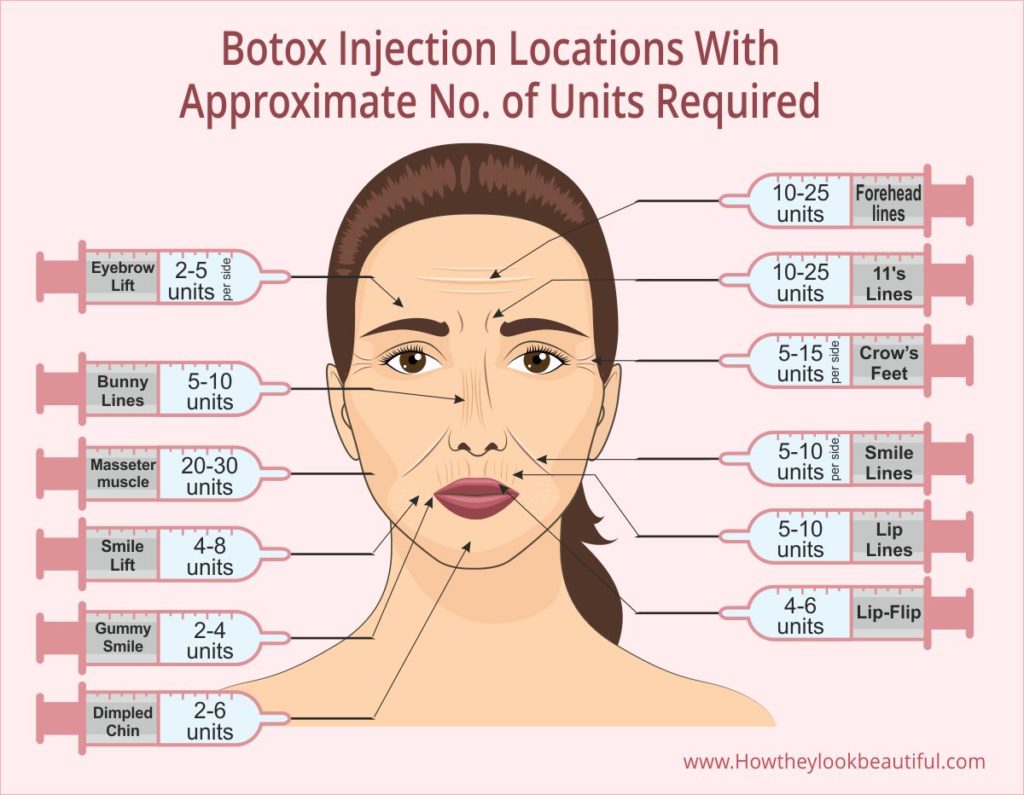
Factors such as age, number of existing wrinkles, how expressive you are, and the locations of your injections can have an effect on the amount of Botox injected into your skin.
Approximate Units of Botox Injected Around Mouth
- Eyebrow Lift – 2-5 units (per side)
- Bunny Lines– 5-10 units
- Masseter muscle – 20-30 units
- Smile Lift – 4-8 units
- Smile Lines – 5-10 units (per side)
- Gummy Smile – 2-4 units
- Dimpled Chin – 2-6 units
- Forehead Lines – 10-25 units
- 11’s Lines (Frown Lines) – 10-25 units
- Crow’s Feet – 5-15 units (per side)
- Lip Lines – 5-10 units
- Lip Flip (Fulltrum) – 4-6 units
- Neck (platysmal) bands – 25-50 units
These are just approximate estimates and may vary depending on the actual state of your wrinkles. your specialist might begin with a low-amount dosage at each injection site. After the first few weeks, typically 1 to 2, he will assess its efficacy and may administer a few additional units of Botox.
Is Botox Safe?
While Botox is generally considered safe when treated by a qualified dermatologist, however, as with any medical procedure, there are some potential side effects that should be taken into consideration before undergoing treatment. These include temporary bruising or swelling at the injection site, headache, nausea, and flu-like symptoms. More serious side effects such as difficulty swallowing or breathing may occur in rare cases.
Patients should also be aware that there is a small risk of infection associated with any injectable cosmetic procedure. The best way to avoid infection is to choose a reputable provider who uses sterile needles and clean techniques.
You should always consult with your doctor before undergoing any cosmetic procedure.
Facts You Should Know Before Botox Treatment
- Botox injections are not permanent and the effects last from 3 to 4 months, and then gradually wear off.
- The cost of Botox varies depending on the number of units used and the area being treated.
- There are some potential side effects of Botox.
- Too much Botox will make your facial muscles weaker and flatter.
- Some wrinkles on the face are hereditary, and you may see them even after Botox injection on the site. Recent studies on twins have revealed that up to 60% of the skin aging variation between individuals can be attributed to genetic factors, while the remaining 40% is due to non-genetic factors.
- The earlier you get Botox, the more preventative its effects, but Botox is not recommended for anyone under 18.
- You should avoid lying down for at least four hours or avoid any strenuous activity or exercise for at least 24 hours after the procedure. This is to prevent the spread of the toxin to other parts of your face. Additionally, avoid any blood-thinning medications for 6 hours.
Celebrities Who Use Botox
A few Celebrities who admit to having Botox injections are Jennifer Aniston, George Clooney, Kim Kardashian, Nicole Kidman, Pamela Anderson, Cindy Lauper, Katie Price, and TOWIE’s Bobby Norcross. Others have kept quiet, leading us to speculate about their changing appearances.
Frequently Asked Questions About Botox on the Face
Botox, typically associated with reducing wrinkles, can also be used to fix asymmetrical eyes. Injections are placed strategically around the eye to relax the muscles and give the eye a more symmetrical appearance. The results are not permanent but can last for several months. It lifts the brows, reducing the appearance of misaligned eyes.
If you have a droopy or lazy eyelid, you may be wondering if Botox can help. Botox can actually improve the appearance of a droopy eyelid by lifting the eyelid and making it appear more open.
Though Botox is generally considered safe, there are some potential side effects, including blurry or double vision. This is because the toxin can sometimes spread to nearby muscles, causing them to weaken or paralyze. In rare cases, this can lead to double vision or even blindness. If you experience any blurry vision after getting Botox, be sure to contact your doctor immediately. Globally, at least 50 cases of blindness after aesthetic facial injection have ever been reported.
Conclusion
In conclusion, the face is the canvas for Botox injections, and where you place the needle matters. Different areas on the face will produce different results, so it’s important to know which botox injection spots will produce the look you desire. for that, you can refer to botox face chart provided in this article. Botox can be injected into four main areas on the face: the forehead, between the eyebrows, around the eyes, and around the mouth. These are the best places to get botox on the face. Each of these botox spots can produce a different result.
Your cosmetologist will help determine these factors during consultation. In general, most people are happy with the results of their Botox injections and report feeling more confident with their appearance.
BOTOX® is a registered trademark of Allergan Inc.
References:
- Botulinum Toxin Treatment Of The Upper Face
- Botulinum toxin (Botox) A for reducing the appearance of facial wrinkles: a literature review of clinical use and pharmacological aspect
- The whole truth about botulinum toxin – a review

Hi, I’m Annie,
What drives me is the ability to empower women by cultivating the self-confidence in their inner beauty, enhancing their self-image, and showing them that overall beauty needn’t be either difficult or costly and that they can seamlessly mould their style to suit their everyday needs, without having to make an either / or choice. I’m constantly surprised at every transformation and it drives me on to the next. My knowledge is enhanced by 18 years of hands-on experience, and learning from every new assignment.
When I’m not writing beauty advice for my blog, I’m consulting on make-up, hair, diet and style. Or I’m just kicking back my heels cuddling with my fat Lab, Coco.
